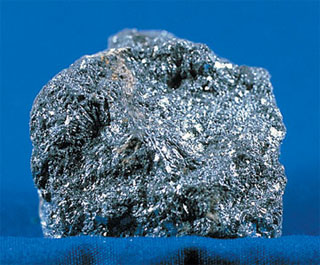Antimony Refining Process Plant

Antimony Refining Process
The Antimony ores grinded by SAG mill are firstly convoyed by belt conveyor to standard cone crusher for crushing. The crushed Antimony ores pass through vibrating screen for separation. The fine Antimony particles move are conveyed to fine ore bin, while the large materials are passed to short head cone crusher for further crushing.
Gulin Antimony cone crushers are specially adapted to process materials with compressive strength less than 350 Mpa. The type of the crushing cavity is decided by the application of ores. Standard cone crusher is suitable for secondary crushing, while short-head cone crusher is your best choice to produce fine particles.
Gulin provides you with a variety of Antimony cone crushers for your choice, such as PY series cone crusher, CS series spring cone crusher, HPC series cone crusher with high efficiency, and HCS 90 series cone crusher. Our Antimony cone crushers are strongly favored by our customers for its high productivity, high quality, lost cost and reliable operation.
Mining in Zimbabwe
Mining was Zimbabwe’s leading industry in 2002, contributing 27% of export trade. The chief minerals were coal, gold, copper, nickel, tin, and clay, and Zimbabwe was a world leader in the production of lithium minerals, chrysotile asbestos, and ferrochromium, with more than half of the world’s known chromium reserves. Zimbabwe was self-sufficient in most minerals, producing 35 commodities from 1,000 mines, mostly small, and exporting 90% of its mineral output. The total value of mineral production exceeded $500 million per year, and the mining sector employed 60,000 people in formal operations; another 100,000–300,000 were thought to be informally employed intermittently in panning for gold. Of total exports of $1.92 billion in 1999, mineral and manufactured metal exports accounted for $550.8 million, down from $736.6 million in 1995.
The most important mineral was gold, valued at $194 million in 2000, down from $244 million in 1999. Gold was the second-leading export commodity ($230 million), followed by ferroalloys ($166.5 million), nickel ($48.1 million), asbestos ($35.8 million), iron and steel ($12.5 million), black granite as dimension stone, copper, diamond, coal, chromite, tin, and silver. Exports of polished granite were expected to reach $100 million in 2000. Steel production was the second-leading industry in 2002, and the manufacture of cement, chemicals, and fertilizers ranked fourth, fifth, and sixth, respectively.
Output of other major minerals included chromite (gross weight), 725,000 tons; asbestos, 145,000 tons, down from 165,000 in 1996; mine copper concentrate (metal content), 2,104 tons, down from 10,000 in 1996; nickel, 8,160 tons, down from 11,164 in 1999 and 12,963 in 1997; lithium minerals (gross weight), 41,957 tons, down from 49,833 in 1997; granite, 130,000 tons, up from 109,903 in 1997; diamond, 16,678 carats, down from 421,307 in 1997; iron ore (metal content), 225,000 tons, down from 300,000 in 1999; and marketable phosphate rock concentrate, 110,000 tons, down from 126,000 in 1999. The Madziwa nickel mine was closed down in 2000, the Mhangura Copper Mines were near depletion, and Munyati Copper Mines Ltd. suspended operations in 2000, following its abandoned sale. In the late 1960s and early 1970s, copper replaced gold and asbestos as the most valuable mineral, but its production has not kept pace with other minerals. Zimbabwe also produced iron ore, palladium, platinum, rhodium, selenium, silver, tin, barite, hydraulic cement, clays (including montmorillonite bentonite and fire clay), emerald, feldspar, graphite, kyanite, limestone, magnesite, mica, nitrogen, phosphate rock, quartz (including silica sand), sulfur, talc, and vermiculite. National PGM metal production fell by 80% from 1998. No antimony, lead, zinc, or iron oxide pigments was produced in the past several years.
Antimony ore dressing method
Antimony ore dressing method, basically have hand picking, re-election, the flotation methods. Among them, to adopt flotation of concentrator for more, followed by hand picking, use heavy optional choose factory is less. A few antimony ore flotation process by using single concentrator, most antimony ore concentrator adopt combination process, such as the hand picking – flotation process, hand picking – re-election – flotation process.
Gulin has independent import-export right with a special international market department to deal with exporting affair. Our mining equipment have taken up a considerable place in the world market. They have been exported to America, Italy, Turkey, Australia, Singapore, Indonesia, Vietnam, Iran, India, Chile, Venezuela, Libya, Ethiopia, United Arab Emirates, Kyrgyzstan etc. and receive high popularity.

